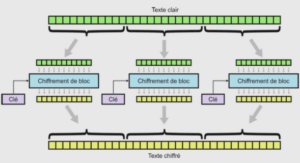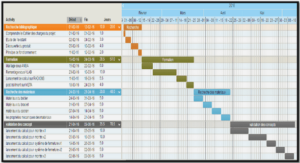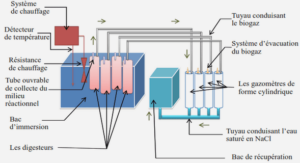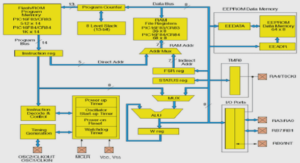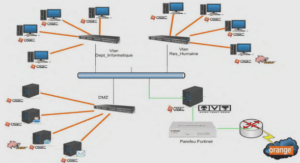Propagation characteristics of mmW band (outdoor links)
The field measurement campaign performed in New York City and the University of Texas at Austin Campus in order to characterize the outdoor propagation of mmW band signals (28 and 38 GHz) in urban environments brought the following conclusions:
Modern building materials are good reflectors which facilitate not only outdoor Non-Line-Of-Sight (NLOS) links but Radio Frequency (RF) power contention within buildings (Zhao et al., 2013);
There is a large number of distinguishable propagation paths at any receiver position in both Line-of-Sight (LOS)/NLOS environments with excess delay spreads (20 dB) up to 753.5 ns and 1,388.4 ns, respectively, allowing feasible links in cell sizes of around 200 m with the help of high gain steerable antennas. The NLOS path loss exponent (PLE) determined was 5.76 with a shadow fading (SF) of 9.02 dB. These values decreased to 4.58 and 8.83 dB, respectively, when only the strongest NLOS links were considered ,(Azar et al., 2013);
The power levels for small scale fading do not change significantly from the mean power level at a fixed AoA and there is an average of 2.5 signal lobes, each with an average total and RMS angle spread of 40.3° and 7.8°, respectively (Samimi et al., 2013);
At 38 GHz, urban canyons entail beam steering over a small range of angles at the transmitter site (Rappaport, 2012);
Elevated 38 GHz transmitters installed at building heights between the second and eighth floor and using beam steering may need up to ±30° off boresight in azimuth to cover nearly all possible NLOS links within the service area and for cases where the LOS direction is blocked, there is a reflection, scattered or diffraction path that permits the UE to receive sufficient power (Rappaport, 2013);
Even for heavy rainfall of 25 mm/hour, the rain attenuation reaches only 1.4 dB/200m at 28 GHz and 1.6 dB/200m at 38 GHz although it may have larger values for short period of times (Zhao, et al., 2006);
Millimeter wave channels are typically characterized by a few dominant paths. The propagation is accurately predicted by ray tracing with a small number of rays (Hur et al., 2015);
Urban canyon topologies may result in a frequent lack of LOS connectivity and severe shadowing (Rangan et al., 2014).
Classical hierarchical alignment procedure
A classical hierarchical beamforming method for antenna alignment purposes uses one antenna main lobe both at BS and UE with a variable beamwidth starting with a low gain in the first level that covers a large space and ending with a high gain (small beamwidth) applied for an angle refinement in a much more restricted angular space. At the end of each level the UE feeds back the best beam identification that permits the BS to direct the illumination in certain specific sector using a new group of antenna patterns with higher gains. This scheme requires much less iterations compared to the exhaustive beam search in which all possible beam directions (fixed beamwidth) both at the BS and UE are tried in order to discover the best beam combination for a maximum received power at the UE position. Hierarchical beamforming techniques applicable at millimeter frequencies have been researched and adopted in the standards IEEE 803.15c for WPAN and IEEE 802.11ad for WLAN which are intended for indoor applications in the 60 GHz band for a maximum range up to 10m (IEEE 802.15.3c/802.11ad Specifications). These techniques do not extend directly for outdoors due to the much larger distances involved (Hur et al., 2013; Ramasamy et al., 2012) and consequently an increased path loss which poses challenges especially in the first stages of the alignment procedure where the antenna presents a wider beamwidth, that is a lower gain.
A variation of the hierarchical method applicable for outdoor pico cells for backhauling and access purposes at 60 GHz has been proposed as a beam alignment technique using adaptive subspace sampling and hierarchical beam codebooks (Hur et al., 2013). The classical alignment scheme applies just one beam both at the BS and UE and concentrates primarily to find the best angles that maximize the received power instead of finding all the dominant path gains and angles (channel estimation).
Hybrid beamforming
A hybrid beamforming has been devised as an alternative method to overcome the large path loss in mmW bands avoiding the costly digital beamforming which requires one RF chain per antenna element and a complete channel state information (CSI) knowledge for its operation. CSI is problematic to get in mmW bands (e.g. 28 GHz) due to the large number of antennas both at BS and UE and the low SNR existent before beamforming. Hybrid beamforming is configured as a combination of a baseband digital precoder followed by analog precoder implemented with RF phase shifters. The combination of this configuration with an adaptive algorithm allows to estimate the mmW channel using for example a hierarchical multiresolution codebook (El Ayach et al. 2012; Alkhateeb et al., 2014). The final number of RF fronts needed depends on the design of the codebook. The discovery of the main propagation paths can be exploited during the data transmission stage.
It is to be noted that the use of hybrid beamforming may allow to get a close spectral efficiency achieved with digital beamforming, nevertheless this cannot increase in terms of the number of data streams due to the limited scattering of the mmW channel (Kwon et al.,2014).
Ray Tracing
Ray Tracing (RT) is a very well-known technique that has the ability to simulate site-specific multipath propagation and the time-space dispersion characteristics of the Tx-Rx channel (Hur et al., 2015, Molisch, et al., 2016). Its high computation time demand becomes easier to overcome with the current computing capabilities. RT is based on the Geometrical Theory of Propagation. The effect of diffraction (edges, vertex) is considered separately through the Geometrical Theory of Diffraction (GTD). Besides the reflection, transmission and diffraction components, modern RT engines incorporates diffuse scattering to include the effect of a larger roughness of the walls and the surface irregularities which are accentuated due to the small wavelength. The larger directivity of the RF illumination obtained with mm-wave frequencies facilitates a high level of accuracy in the RT predictions (Degli-Esposti etal., 2014).
RT requires a detailed description of the geometrical and electromagnetic properties of every object (buildings, vegetation,…) in the simulated service area together with the antenna radiation patterns applied. Its algorithm can be separated in the visibility algorithm and the field computation procedure. The first creates a database of the objects and their visibility relations are used to trace the ray paths. In the second part, the path reflection, transmission and diffraction losses are computed together with the diffuse scattering effect (Degli-Esposti et al., 2014). Commercial software packages for mmW propagation prediction in urban environments provide different output and analysis options (Međedović et al., 2012).
Global Positioning System (GPS) and Assisted GPS (A-GPS)
The Global Positioning System (USA) is a space-based navigation system (24 satellites) that provides location, speed and time information to a user anywhere on the earth under any weather condition. There are other systems available or under development for the same purpose like the Russian Global Navigation Satellite System (GLONASS), the European Union Galileo, Indian Regional Navigation Satellite System, BeiDou Navigation Satellite System (China) and the Japanese Quasi-Zenith Satellite System.
A GPS receiver must be locked to at least to 3 satellites to calculate a 2-D position (latitude and longitude) and track movement. Four or more satellites allows the receiver to determine the 3-D position, that is, the latitude, longitude and altitude. The GPS unit can also calculate the speed, bearing, trip distance and more. Current commercial GPS receivers can have an average accuracy equal or less than 15 meters which can be lowered to 3 meters with a Wide Area Augmentation System (WAAS). Among the factors that can affect the GPS accuracy are the signal multipath, number of satellites visible and geometry, intentional degradation of the satellite signal (Selective Availability-SA).
|
Table des matières
INTRODUCTION
CHAPTER 1 BACKGROUND
1.1 Propagation characteristics of mmW band (outdoor links)
1.2 Compressive sensing in channel estimation in mmW
1.3 Classical hierarchical alignment procedure
1.4 Hybrid beamforming
1.5 Ray Tracing
1.5.1 Wireless Insite
1.6 Genetic algorithm
1.7 Global Positioning System (GPS) and Assisted GPS (A-GPS)
CHAPTER 2 EXPLOITING SITE-SPECIFIC PROPAGATION CHARACTERISTICS IN DIRECTIONAL SEARCH AT 28 GHz
2.1 Introduction
2.2 System model and simulation methodology
2.2.1 System model
2.2.2 Simulation methodology
2.3 Approximate identification of the angle range
2.3.1 Angle identification assessment
2.4 Performance impact
2.4.1 Maximum received SNR using the complete and best sets of BS angles
2.4.2 Maximum received SNR using a limited number of BS angles
2.4.3 Maximum received SNR in a mobile user using a limited number of BS angles
2.4.4 Number of switches in a beam training
2.5 Conclusions
CHAPTER 3 POSITION-AIDED MILLIMETER WAVE BEAM TRAINING UNDER NLOS CONDITION
3.1 Introduction
3.2 System model and simulation methodology
3.2.1 System model
3.2.2 Simulation methodology
3.3 Proposed Hierarchical Method
3.3.1 Number of steps
3.4 Algorithm performance
3.4.1 Static case
3.4.2 Random variation of the maximum received power
3.5 Conclusions
CHAPTER 4 TAKING ADVANTAGE OF A SECOND PROPAGATION PATH AT 28 GHz UNDER NLOS CONDITIONS
4.1 Introduction
4.2 System model and simulation methodology
4.2.1 System model
4.2.2 Simulation methodology
4.3 Proposed method
4.4 Algorithm performance
4.4.1 Static case
4.4.2 Random variation of the maximum received power
4.5 Conclusions
CONCLUSION
![]() Télécharger le rapport complet
Télécharger le rapport complet

